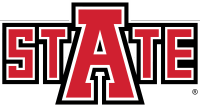Date of Award
4-1-2025
Document Type
Dissertation
Degree Name
Educational Leadership, Ed.D.
First Advisor
Topeka Singleton
Committee Members
Chris Jenkins, Mingui Gao, Topeka Singleton
Call Number
ISBN 9798310167179
Abstract
The purpose of this qualitative case study was to explore educators’ perceptions of how special education teachers (SETs) influence special education students' (SESs) transition from secondary to postsecondary opportunities in a small, rural high school in Tennessee. The researcher focused on special education educators and how they support students with disabilities in transitioning from secondary to postsecondary opportunities, including education, employment, apprenticeships, and military. These factors were explored through data review and interviews from educators’ perspectives of SETs. This study involved examining how SESs traditionally fail to experience postsecondary success at the same degree as their peers without disabilities, including having severe gaps in enrollment in postsecondary education, employment, and other transition-related opportunities. The sample comprised 12 educators who worked at a small rural high school. The study setting was Neyland County High School (pseudonym), a small, rural high school. Data provided by the high school and district, including state assessments, universal screeners, curriculum information, graduation information, and special education information, were triangulated. Findings revealed that SESs need more classes to address several areas of interest in postsecondary opportunities, including transition skills and expanding the students’ interest. Additionally, SESs should start their transition plan earlier than what is required by law due to their deficits and to gain the knowledge and skills necessary to be successful within the curriculum, extra-curricular activities, and postsecondary opportunities. The final finding was to provide adequate training for general education teachers on supporting SESs transition to postsecondary opportunities. The study’s findings contributed to relevant literature and the data presented. These findings can help the school and school district in meeting Indicator 13 of the State Performance Plan, which requires and shows the percentage of students with IEPS aged 16 and above. These students have measurable postsecondary goals updated annually, based on age-appropriate transition assessments, services, and courses of study to meet their postsecondary goals successfully that the school and district are currently not meeting. Keywords: individual education plan, postsecondary opportunities, special education, transition
Rights Management

This work is licensed under a Creative Commons Attribution-NonCommercial-No Derivative Works 4.0 International License.
Recommended Citation
Stanford, Lacy, "A Case Study of Special Education Students' Transition into Postsecondary Opportunities" (2025). Student Theses and Dissertations. 7.
https://arch.astate.edu/all-etd/7

